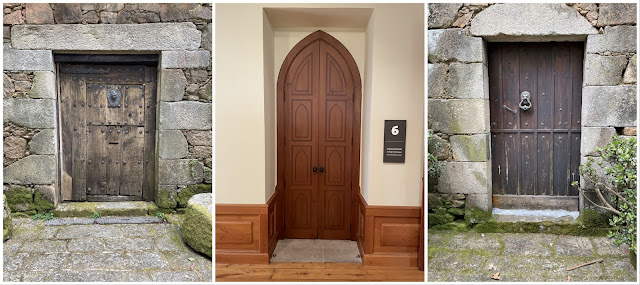BEYOND VIGO
This morning I awoke and found that we were ported in Vigo, Spain! Vigo is known as Spain’s “Gateway to the Atlantic” and is one of the largest cities in Spain’s northwestern region. Unfortunately - or maybe fortunately for us - we weren’t able to spend any time visiting and learning about Vigo. We just passed through it on our way elsewhere…..
Here’s what happened: After we committed to taking the Around The World Cruise, we were able to sign up for excursions. That in itself was very overwhelming because there were so many choices. There was a particular one that was offered in Vigo, Spain and was a “Privileged Access Tour”. I knew I wanted it right away, but by the time I tried to sign up it was already full. I was very disappointed and immediately put us on the waitlist. We were on that waitlist since January and finally a space opened up a week before the excursion! Actually, I not sure if a space actually opened up or if Zoe at Guest Service created a space for us, but at any rate, we were able to go!
So, this post will be about our wonderful journey to Soutomaior Castle & Gardens and Rubianes Gardens & Vineyards. This excursion is right up there as one of our favorites! We boarded our coach and headed through Vigo and into the Galicia countryside towards the Castle. Along the way we saw farmland and several small villages. One thing that seemed common in the villages was a structure on stilts. We were curious about what these were. Once at the castle, our guide explained that these were grain storage structures called horreos. They were built on wooden or concrete stilts to protect the grain from pests, moisture, and rodents. The stilts have a rim around it that pushed the rodent down. Having one of these grain structures was a sign of status and wealth - the larger they were, the wealthier the owner was. It’s estimated that there are over 100,000 of these in the region including ones at Soutomaior Castle and at Pazo de Rubianes where we would be touring.
These are the ones at the castle. Many Horreos have crosses on them as a symbol of protection and to ward off evil spirits.
This horreos is one of the largest in the region. It is located on the grounds of Pazo de Rubianes. At the top of each pillar is a cap called a muela that keeps the rodents from getting inside.
Our first stop was Castelo de Soutomaior. This castle was incredible!
Here the description from the brochure:
“This fortress of medieval origin welcomed, in the 19th century, a residential palace. These lands, that once saw battles, sieges and farming, are transformed into a botanical park of international excellence in camellia. An unbeatable place where history is natures home.”
The castle as we know it today was originally a fortress used to protect the fertile valley of the Verdugo River and its busy bridges and to offer protection in case of attack from the sea. When it was no longer needed, it was converted to a summer residence with a Camellia garden and trees from all over the world.
Looking up at the castle as we walked along the walkway from to road to the castle and the views below.
Exterior of the castle.
While the castle’s exterior is pretty rustic, the interior was refined. Chandeliers, beautiful wood trim and marble fireplaces.
The toilet (right top & center) of bygone days is still present. “Natural” plumbing three stories high! Views from one of the balconies.
We loved exploring in the gardens!
Photos above and below are of the gardens. Camellias thrive here.
Next stop and not far away is Pazo de Rubianes where we walked through its glorious gardens and small vineyard. “Pazo de Rubianes” in English translates to “Palace of Rubianes”. It refers to a historic estate and vineyard located in the Salnes region of Galicia, Spain. The estate is known for its camellia garden, Albariño vineyards and historic buildings.
We toured the lovely gardens, admired and learned about the part of the vineyard that was near the gardens and had tapas and wine in one of the historic buildings. We weren’t able to enter the manor house because it is privately owned. Enjoy the photos! The place is so beautiful that I took a ton of photos. Sorry if this post is photo heavy - I didn’t know when to stop!
The entry into the estate.
The formal gardens. Formal European Gardens are my favorite!
The stately Manor also called a Palace.
The Vineyard. The vines grow on a trellis system and vegetables are sometimes planted underneath.
Another thing I love is garden statuary. There were many!
Camellias, Etc.
Camellia Trees and Fruit Trees. Lemons!
Historical buildings. Chapel, stables, etc.
The Tasting Room. We were served a beautiful display of Tapas and Wine.
I liked the contrast of doors. Fancy from the Castle and Rustic at the Estate.
And that’s why we were happy to skip the tours in Vigo. We loved all the beauty here! Another Wonderful Day! La Conviviance!

























Comments
Post a Comment